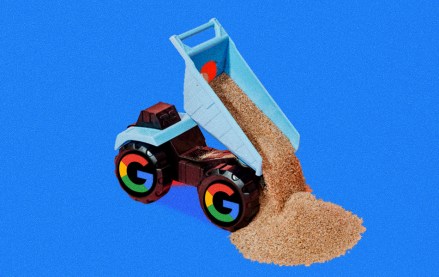
With all the talk of display ad growth, there’s a problem that’s rarely addressed: Banners aren’t helpful. Honestly, can you think of any specific sites or apps, other than search, where introducing ads improved your user experience? Here’s an experiment for you. Download Ad Block Plus, use the Web for a week. See if you find your experience better or worse.
The problem is simple: Display ads are bad content. Most ads don’t deliver value, which is why fewer than 10 percent of Internet users will click on any display ad during the year. To deal with this, the display advertising industry is waging a war against consumers by placing more display ads on sites. In the words of Seth Godin, “Advertisers distract users; users ignore advertisers. Advertisers distract better; users ignore better.”
More intrusive ad formats and more sophisticated targeting risk alienating users and further eroding consumer trust. The poor user experience of display advertising ultimately hurts publishers and advertisers. They, and not the invisible ad intermediaries, have the relationship with users, and so they receive the good will and wrath of users. I shudder to think how much worse user experience could get as the display ad industry continues to grow over the next two to three years. The vicious cycle has to end. We have to stop talking about display advertising being relevant and valuable, and we need to start doing something about it.
Publishers have to walk a fine line as they need to make money from advertisements, but at the same time, they need to provide a great user experience for their visitors. In order to do so, and to help repair the damage caused by display advertising, publishers need to provide consumers with relevant content – which can be in the form of sponsored content or advertising – when they want to view it. The solution is to integrate that relevant content directly into the content that consumers are reading or viewing online and then invite them to interact with that content. This type of engagement is called invitation-driven engagement, and it benefits publishers, advertisers and, most importantly, the consumer.
Invitation-driven engagement invites a consumer to interact with a brand with the promise that the consumer will receive value for the interaction. For example, a consumer who is reading a chocolate chip cookie recipe may notice that the word butter has text next to it that says, “Interested in a healthy alternative?” When a user rolls his mouse over that “invitation,” he is inviting an interaction and he may be presented with a lower cholesterol, lower fat alternative, such as Smart Choice Butter Spread. This form of engagement is not as intrusive as display advertising and really adds value to the user experience.
The key to invitation-driven engagement is a deep understanding of the context and content the consumer is engaged with. With that information, brands can provide timely and relevant information directly related to the content that consumers are engaged with online, in return for their time. This approach to advertising actually enhances the user experience and is much more effective than display advertising for brands.
The display advertising system is broken and publishers, advertisers and consumers are all being negatively impacted. In order to solve this problem, the ad tech community needs to identify and implement new ways to effectively advertise to consumers, and one way that is showing lots of promise is this type of contextually relevant, invitation-driven engagement.
More in Media

AI Briefing: How political startups are helping small political campaigns scale content and ads with AI
With about 100 days until Election Day, politically focused startups see AI as a way to help national and local candidates quickly react to unexpected change.

Media Briefing: Publishers reassess Privacy Sandbox plans following Google’s cookie deprecation reversal
Google’s announcement on Monday to reverse its plans to fully deprecate third-party cookies from its Chrome browser seems to have, in turn, reversed some publishers’ stances on the Privacy Sandbox.

Why Google’s cookie deprecation reversal isn’t actually a reprieve for publishers
Publishers are keeping a “business as usual” approach to testing cookieless alternatives despite Google’s announcement that it won’t be fully deprecating third-party cookies after all.





